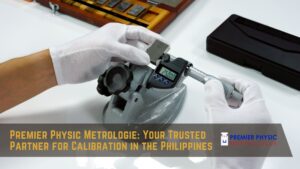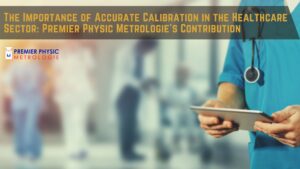In any industry where precision and accuracy matter, equipment calibration plays a pivotal role. Whether it’s in manufacturing, healthcare, or research laboratories, properly calibrated equipment ensures reliable results, maintains quality standards, and enhances operational efficiency. But how often should you schedule calibration to ensure optimal equipment performance? Let’s dive into the intricacies of equipment calibration and explore the best practices for setting calibration intervals.
Discover the best practices for scheduling calibration to ensure optimal equipment performance. Learn why calibration frequency matters and how to determine the right schedule for your equipment.
Introduction
Calibration is a critical aspect of maintaining equipment performance and accuracy. Determining how often to schedule calibration for your equipment is essential for ensuring consistent results and prolonging the lifespan of your machinery. In this comprehensive guide, we delve into the factors influencing calibration frequency and provide expert insights to help you establish an effective calibration schedule tailored to your needs.
Equipment Calibration
Calibration is the process of comparing the measurements of a piece of equipment to a known standard to determine its accuracy. This ensures that the equipment provides results within acceptable limits. Various types of equipment require calibration, including but not limited to measuring instruments, analytical devices, and testing equipment.
Understanding Calibration Frequency
Calibration frequency refers to how often a piece of equipment should undergo calibration to maintain accuracy and reliability. The ideal calibration interval varies depending on factors such as equipment type, usage environment, industry regulations, and manufacturer recommendations. By adhering to a regular calibration schedule, you can minimize the risk of inaccuracies, prevent equipment malfunctions, and uphold quality standards.
Factors Influencing Calibration Frequency
Factors influencing calibration frequency include:
Equipment Type and Complexity
Different types of equipment require varying levels of calibration frequency based on their complexity and sensitivity. High-precision instruments such as medical devices and laboratory equipment often necessitate more frequent calibration compared to standard machinery.
Usage Environment
The operating environment can impact the rate of equipment degradation and the need for calibration. Harsh conditions such as extreme temperatures, humidity, or exposure to contaminants may accelerate wear and require more frequent calibration.
Industry Regulations
Certain industries, such as healthcare, aerospace, and automotive, have stringent regulatory requirements governing equipment calibration. Adhering to industry standards and regulations is crucial for compliance and ensuring the accuracy and reliability of critical systems.
Manufacturer Recommendations
Manufacturers provide guidelines regarding calibration intervals based on equipment specifications, performance characteristics, and maintenance requirements. Following manufacturer recommendations helps optimize equipment performance and extends its operational life.
Consequences of Improper Calibration
Failure to calibrate equipment at appropriate intervals can lead to various consequences. Inaccurate measurements can compromise product quality, jeopardize safety, and result in non-compliance with regulations. Regular calibration ensures that equipment operates within specified tolerances, minimizing the risk of errors and ensuring reliability.
Benefits of Regular Calibration
Regular calibration offers numerous benefits, including:
- Accuracy: Ensures measurements and readings are precise and reliable.
- Reliability: Minimizes the risk of errors and equipment malfunctions.
- Quality Assurance: Upholds quality standards and regulatory compliance.
- Cost Savings: Prevents costly downtime, repairs, and product defects.
- Safety: Enhances safety by ensuring equipment operates within specified parameters.
Determining Calibration Frequency
Determining the optimal calibration frequency involves assessing various factors to develop a customized schedule tailored to your specific requirements. Consider the following steps:
- Review Manufacturer Guidelines: Start by reviewing the equipment manufacturer’s recommendations for calibration intervals.
- Assess Usage Patterns: Evaluate how frequently the equipment is used and under what conditions to gauge the rate of wear and potential calibration needs.
- Monitor Performance: Regularly monitor equipment performance and accuracy to detect any deviations or inconsistencies that may indicate the need for calibration.
- Consider Industry Standards: Take into account industry-specific regulations and standards that may dictate calibration frequency requirements.
- Consult Experts: Seek guidance from calibration experts or equipment manufacturers to assess your calibration needs accurately.
How Often Should You Schedule Calibration for Your Equipment?
Determining the optimal calibration frequency depends on various factors, including equipment type, usage environment, industry regulations, and manufacturer recommendations. While there is no one-size-fits-all approach, following best practices and guidelines can help you establish an effective calibration schedule.
To ensure optimal equipment performance and accuracy, consider the following tips:
- Follow Manufacturer Guidelines: Adhere to the manufacturer’s recommended calibration intervals based on equipment specifications and usage requirements.
- Monitor Equipment Performance: Regularly monitor equipment performance and conduct routine checks to detect any deviations or inaccuracies that may necessitate calibration.
- Consider Industry Regulations: Stay informed about industry-specific regulations and compliance requirements governing equipment calibration to ensure adherence to standards.
- Implement Preventive Maintenance: Incorporate preventive maintenance practices to prolong equipment lifespan and minimize the risk of breakdowns or malfunctions.
By prioritizing calibration and implementing proactive maintenance measures, you can optimize equipment performance, enhance reliability, and maintain quality standards.
Developing a Calibration Schedule
Establishing a systematic approach to calibration is crucial for effective maintenance management. Integrating calibration into routine maintenance schedules ensures that it becomes a proactive rather than reactive process. Calibration management software can streamline the scheduling, execution, and documentation of calibration activities, enhancing efficiency and traceability.
Signs Your Equipment Needs Calibration
Monitoring equipment performance and identifying signs that indicate the need for calibration is essential. Any noticeable changes in measurement accuracy, irregularities in equipment behavior, or deviations from reference standards should prompt immediate calibration. Regular calibration checks can help maintain confidence in measurement results and prevent potential issues.
Calibration Process Overview
The calibration process typically involves several steps, including preparation, adjustment (if necessary), measurement, and documentation. Trained personnel with expertise in calibration techniques perform these tasks to ensure accuracy and consistency. Proper documentation of calibration results and traceability to national or international standards are essential for quality assurance and regulatory compliance.
Tips for Effective Calibration Management
Effective calibration management involves more than just performing calibrations at regular intervals. Regular audits and reviews of calibration procedures and practices help identify areas for improvement and ensure compliance with standards. Employee training and awareness programs enhance understanding and adherence to calibration protocols, fostering a culture of quality and reliability.
Cost Considerations
While calibration is essential for maintaining equipment performance, it also incurs costs. Budgeting for calibration expenses and conducting a cost-benefit analysis can help organizations prioritize calibration activities and allocate resources efficiently. Investing in preventive maintenance, including regular calibration, can ultimately reduce overall operational costs by minimizing downtime and ensuring product quality.
New Technologies in Calibration
Advancements in technology continue to revolutionize the calibration process. Automation and digitalization are increasingly being adopted to streamline calibration workflows, improve efficiency, and enhance data integrity. Emerging technologies such as remote calibration capabilities and sensor networks offer new possibilities for real-time monitoring and predictive maintenance.
Common Challenges in Calibration
Despite its importance, calibration management poses several challenges for organizations. Limited resources, including time, personnel, and equipment, can hinder effective calibration activities. Calibration drift, where equipment gradually deviates from its calibrated state, presents another challenge, requiring frequent recalibration to maintain accuracy. Additionally, keeping pace with evolving regulations and standards adds complexity to calibration management.
Future Outlook
Looking ahead, the future of equipment calibration is characterized by ongoing technological advancements and evolving industry requirements. Innovations such as augmented reality-enabled calibration tools and machine learning algorithms for predictive calibration hold promise for enhancing efficiency and accuracy. Organizations that embrace these advancements and adopt proactive calibration strategies will be better positioned to maintain competitive advantages and ensure compliance with regulatory requirements.
Conclusion
Establishing an effective calibration schedule is vital for maintaining equipment performance, accuracy, and reliability. By understanding the factors influencing calibration frequency and following best practices, you can optimize equipment performance, uphold quality standards, and ensure regulatory compliance. Prioritize calibration as an integral part of your maintenance strategy to safeguard equipment integrity and maximize operational efficiency.
FAQs (Frequently Asked Questions)
1. How do I know when my equipment needs calibration? Regularly monitor equipment performance and accuracy. Signs indicating the need for calibration include inconsistent readings, deviations from standard measurements, or equipment malfunctions.
2. Can I calibrate equipment myself, or should I hire a professional? While some basic calibrations can be performed in-house, complex or specialized equipment may require calibration by trained professionals with the necessary expertise and equipment.
3. What are the consequences of neglecting calibration? Neglecting calibration can lead to inaccurate measurements, compromised product quality, regulatory non-compliance, safety risks, and costly equipment failures or repairs.
4. How does calibration frequency affect equipment lifespan? Regular calibration helps maintain equipment accuracy and performance, extending its operational lifespan and minimizing the need for premature replacement or repairs.
5. Is there a standard calibration interval for all equipment types? No, calibration intervals vary depending on factors such as equipment type, usage environment, industry regulations, and manufacturer recommendations. It’s essential to establish a customized calibration schedule based on specific requirements.
6. Can calibration be automated to streamline the process? Yes, automation technologies such as calibration management software can streamline the calibration process by scheduling, tracking, and documenting calibration activities efficiently.



